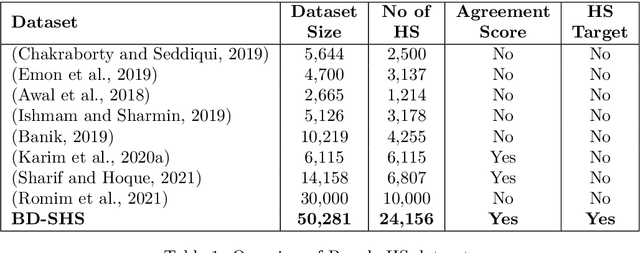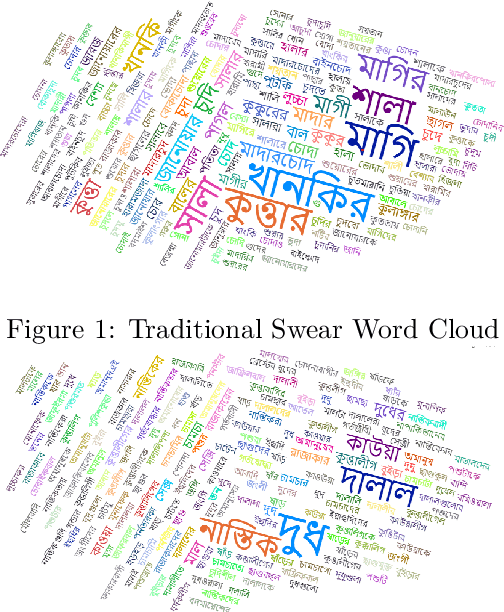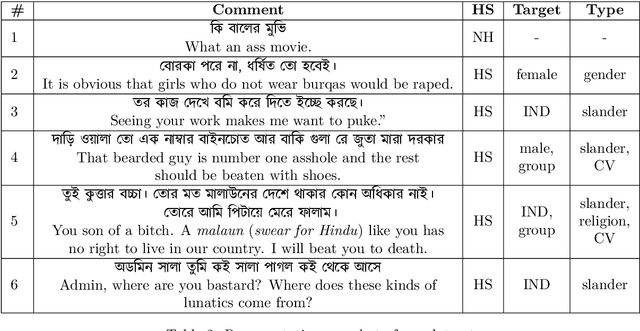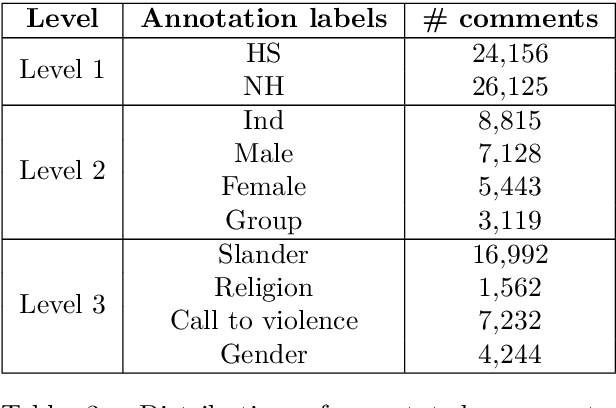Arnab Sen Sharma
Language Models use Lookbacks to Track Beliefs
May 20, 2025Abstract:How do language models (LMs) represent characters' beliefs, especially when those beliefs may differ from reality? This question lies at the heart of understanding the Theory of Mind (ToM) capabilities of LMs. We analyze Llama-3-70B-Instruct's ability to reason about characters' beliefs using causal mediation and abstraction. We construct a dataset that consists of simple stories where two characters each separately change the state of two objects, potentially unaware of each other's actions. Our investigation uncovered a pervasive algorithmic pattern that we call a lookback mechanism, which enables the LM to recall important information when it becomes necessary. The LM binds each character-object-state triple together by co-locating reference information about them, represented as their Ordering IDs (OIs) in low rank subspaces of the state token's residual stream. When asked about a character's beliefs regarding the state of an object, the binding lookback retrieves the corresponding state OI and then an answer lookback retrieves the state token. When we introduce text specifying that one character is (not) visible to the other, we find that the LM first generates a visibility ID encoding the relation between the observing and the observed character OIs. In a visibility lookback, this ID is used to retrieve information about the observed character and update the observing character's beliefs. Our work provides insights into the LM's belief tracking mechanisms, taking a step toward reverse-engineering ToM reasoning in LMs.
Elucidating Mechanisms of Demographic Bias in LLMs for Healthcare
Feb 18, 2025Abstract:We know from prior work that LLMs encode social biases, and that this manifests in clinical tasks. In this work we adopt tools from mechanistic interpretability to unveil sociodemographic representations and biases within LLMs in the context of healthcare. Specifically, we ask: Can we identify activations within LLMs that encode sociodemographic information (e.g., gender, race)? We find that gender information is highly localized in middle MLP layers and can be reliably manipulated at inference time via patching. Such interventions can surgically alter generated clinical vignettes for specific conditions, and also influence downstream clinical predictions which correlate with gender, e.g., patient risk of depression. We find that representation of patient race is somewhat more distributed, but can also be intervened upon, to a degree. To our knowledge, this is the first application of mechanistic interpretability methods to LLMs for healthcare.
The Quest for the Right Mediator: A History, Survey, and Theoretical Grounding of Causal Interpretability
Aug 02, 2024


Abstract:Interpretability provides a toolset for understanding how and why neural networks behave in certain ways. However, there is little unity in the field: most studies employ ad-hoc evaluations and do not share theoretical foundations, making it difficult to measure progress and compare the pros and cons of different techniques. Furthermore, while mechanistic understanding is frequently discussed, the basic causal units underlying these mechanisms are often not explicitly defined. In this paper, we propose a perspective on interpretability research grounded in causal mediation analysis. Specifically, we describe the history and current state of interpretability taxonomized according to the types of causal units (mediators) employed, as well as methods used to search over mediators. We discuss the pros and cons of each mediator, providing insights as to when particular kinds of mediators and search methods are most appropriate depending on the goals of a given study. We argue that this framing yields a more cohesive narrative of the field, as well as actionable insights for future work. Specifically, we recommend a focus on discovering new mediators with better trade-offs between human-interpretability and compute-efficiency, and which can uncover more sophisticated abstractions from neural networks than the primarily linear mediators employed in current work. We also argue for more standardized evaluations that enable principled comparisons across mediator types, such that we can better understand when particular causal units are better suited to particular use cases.
NNsight and NDIF: Democratizing Access to Foundation Model Internals
Jul 18, 2024



Abstract:The enormous scale of state-of-the-art foundation models has limited their accessibility to scientists, because customized experiments at large model sizes require costly hardware and complex engineering that is impractical for most researchers. To alleviate these problems, we introduce NNsight, an open-source Python package with a simple, flexible API that can express interventions on any PyTorch model by building computation graphs. We also introduce NDIF, a collaborative research platform providing researchers access to foundation-scale LLMs via the NNsight API. Code, documentation, and tutorials are available at https://www.nnsight.net.
Locating and Editing Factual Associations in Mamba
Apr 04, 2024



Abstract:We investigate the mechanisms of factual recall in the Mamba state space model. Our work is inspired by previous findings in autoregressive transformer language models suggesting that their knowledge recall is localized to particular modules at specific token locations; we therefore ask whether factual recall in Mamba can be similarly localized. To investigate this, we conduct four lines of experiments on Mamba. First, we apply causal tracing or interchange interventions to localize key components inside Mamba that are responsible for recalling facts, revealing that specific components within middle layers show strong causal effects at the last token of the subject, while the causal effect of intervening on later layers is most pronounced at the last token of the prompt, matching previous findings on autoregressive transformers. Second, we show that rank-one model editing methods can successfully insert facts at specific locations, again resembling findings on transformer models. Third, we examine the linearity of Mamba's representations of factual relations. Finally we adapt attention-knockout techniques to Mamba to dissect information flow during factual recall. We compare Mamba directly to a similar-sized transformer and conclude that despite significant differences in architectural approach, when it comes to factual recall, the two architectures share many similarities.
Function Vectors in Large Language Models
Oct 23, 2023Abstract:We report the presence of a simple neural mechanism that represents an input-output function as a vector within autoregressive transformer language models (LMs). Using causal mediation analysis on a diverse range of in-context-learning (ICL) tasks, we find that a small number attention heads transport a compact representation of the demonstrated task, which we call a function vector (FV). FVs are robust to changes in context, i.e., they trigger execution of the task on inputs such as zero-shot and natural text settings that do not resemble the ICL contexts from which they are collected. We test FVs across a range of tasks, models, and layers and find strong causal effects across settings in middle layers. We investigate the internal structure of FVs and find while that they often contain information that encodes the output space of the function, this information alone is not sufficient to reconstruct an FV. Finally, we test semantic vector composition in FVs, and find that to some extent they can be summed to create vectors that trigger new complex tasks. Taken together, our findings suggest that LLMs contain internal abstractions of general-purpose functions that can be invoked in a variety of contexts.
Linearity of Relation Decoding in Transformer Language Models
Aug 17, 2023Abstract:Much of the knowledge encoded in transformer language models (LMs) may be expressed in terms of relations: relations between words and their synonyms, entities and their attributes, etc. We show that, for a subset of relations, this computation is well-approximated by a single linear transformation on the subject representation. Linear relation representations may be obtained by constructing a first-order approximation to the LM from a single prompt, and they exist for a variety of factual, commonsense, and linguistic relations. However, we also identify many cases in which LM predictions capture relational knowledge accurately, but this knowledge is not linearly encoded in their representations. Our results thus reveal a simple, interpretable, but heterogeneously deployed knowledge representation strategy in transformer LMs.
Mass-Editing Memory in a Transformer
Oct 13, 2022



Abstract:Recent work has shown exciting promise in updating large language models with new memories, so as to replace obsolete information or add specialized knowledge. However, this line of work is predominantly limited to updating single associations. We develop MEMIT, a method for directly updating a language model with many memories, demonstrating experimentally that it can scale up to thousands of associations for GPT-J (6B) and GPT-NeoX (20B), exceeding prior work by orders of magnitude. Our code and data are at https://memit.baulab.info.
BD-SHS: A Benchmark Dataset for Learning to Detect Online Bangla Hate Speech in Different Social Contexts
Jun 01, 2022



Abstract:Social media platforms and online streaming services have spawned a new breed of Hate Speech (HS). Due to the massive amount of user-generated content on these sites, modern machine learning techniques are found to be feasible and cost-effective to tackle this problem. However, linguistically diverse datasets covering different social contexts in which offensive language is typically used are required to train generalizable models. In this paper, we identify the shortcomings of existing Bangla HS datasets and introduce a large manually labeled dataset BD-SHS that includes HS in different social contexts. The labeling criteria were prepared following a hierarchical annotation process, which is the first of its kind in Bangla HS to the best of our knowledge. The dataset includes more than 50,200 offensive comments crawled from online social networking sites and is at least 60% larger than any existing Bangla HS datasets. We present the benchmark result of our dataset by training different NLP models resulting in the best one achieving an F1-score of 91.0%. In our experiments, we found that a word embedding trained exclusively using 1.47 million comments from social media and streaming sites consistently resulted in better modeling of HS detection in comparison to other pre-trained embeddings. Our dataset and all accompanying codes is publicly available at github.com/naurosromim/hate-speech-dataset-for-Bengali-social-media
HS-BAN: A Benchmark Dataset of Social Media Comments for Hate Speech Detection in Bangla
Dec 03, 2021



Abstract:In this paper, we present HS-BAN, a binary class hate speech (HS) dataset in Bangla language consisting of more than 50,000 labeled comments, including 40.17% hate and rest are non hate speech. While preparing the dataset a strict and detailed annotation guideline was followed to reduce human annotation bias. The HS dataset was also preprocessed linguistically to extract different types of slang currently people write using symbols, acronyms, or alternative spellings. These slang words were further categorized into traditional and non-traditional slang lists and included in the results of this paper. We explored traditional linguistic features and neural network-based methods to develop a benchmark system for hate speech detection for the Bangla language. Our experimental results show that existing word embedding models trained with informal texts perform better than those trained with formal text. Our benchmark shows that a Bi-LSTM model on top of the FastText informal word embedding achieved 86.78% F1-score. We will make the dataset available for public use.
 Add to Chrome
Add to Chrome Add to Firefox
Add to Firefox Add to Edge
Add to Edge